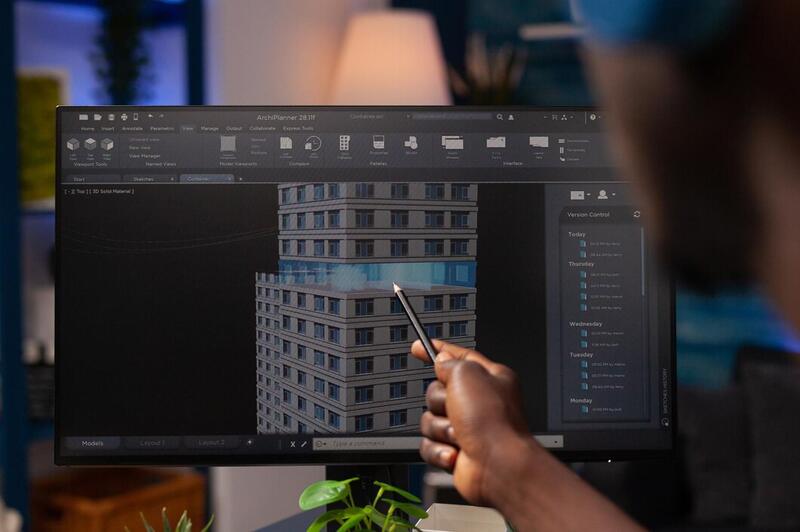Architecture has always been a blend of creativity and technical precision. With the rapid evolution of technology, architecture design software has become a vital tool in bringing innovative concepts to life. From conceptual sketches to detailed blueprints, this software enables architects to streamline processes, enhance creativity, and improve collaboration. Below, we explore why architecture design software is integral to modern building and design practices.
1. Streamlining Design Processes
One of the most significant advantages of architecture design software is its ability to simplify complex design workflows. Traditional drafting methods often require significant manual effort, with revisions being labor-intensive and time-consuming. With architectural design software, these tasks are automated, allowing architects to focus on their creative vision. The ability to quickly modify designs without starting from scratch is a game-changer, saving valuable time and effort.
2. Precision and Accuracy
Architecture design software ensures a high level of precision in every aspect of a project. It allows architects to define exact measurements, angles, and dimensions with ease. This accuracy is critical, as even minor errors can have significant consequences during construction. Moreover, the software’s ability to detect inconsistencies or clashes in structural elements helps prevent costly mistakes, ensuring that the design aligns perfectly with engineering requirements.
3. Enhanced Visualization
Gone are the days of relying solely on 2D sketches and blueprints to communicate ideas. Modern architectural design software offers powerful 3D modeling tools that bring concepts to life. These realistic renderings allow architects and clients to visualize the final structure before construction begins. Features like lighting simulation, texture mapping, and environmental analysis provide a comprehensive view of how a building will appear and function in its intended setting.
4. Collaboration and Communication
In architecture, collaboration is key. Architecture design software fosters better communication among architects, engineers, contractors, and clients. Cloud-based platforms allow team members to access and edit designs in real time, ensuring everyone stays updated on project developments. This collaborative approach not only improves efficiency but also minimizes misunderstandings and errors. The ability to share interactive 3D models and walkthroughs enhances client engagement, making it easier to convey design ideas effectively.
5. Sustainability and Environmental Impact
Sustainability has become a cornerstone of modern architecture, and architectural design software plays a pivotal role in achieving this goal. The software enables architects to analyze a building’s energy efficiency, material usage, and environmental impact during the design phase. By simulating factors like natural lighting, ventilation, and thermal performance, architects can make informed decisions that reduce energy consumption and promote eco-friendly practices.
6. Cost and Time Efficiency
Architecture design software significantly reduces the time and cost associated with traditional design methods. By automating repetitive tasks and offering tools for quick revisions, it accelerates the design process. Additionally, the ability to detect and address potential issues early on prevents costly changes during construction. With better resource allocation and reduced waste, architectural design software helps projects stay within budget while maintaining high-quality standards.
7. Supporting Creativity and Innovation
Architectural design software is not just a technical tool; it’s also a creative catalyst. Its advanced features allow architects to experiment with unconventional designs and explore innovative solutions. Whether it’s a futuristic skyscraper or a sustainable housing project, the software provides the flexibility and tools needed to push creative boundaries. Features like parametric design, which uses algorithms to generate complex structures, are transforming the way architects approach design challenges.
8. Versatility Across Project Types
The versatility of architecture design software makes it suitable for a wide range of projects. From residential buildings and commercial spaces to urban planning and landscape design, the software adapts to various architectural needs. Its ability to integrate with engineering and construction tools ensures a seamless transition from design to execution, making it an invaluable asset for professionals across the industry.
Conclusion
Architecture design software has redefined how architects approach their craft. By combining precision, efficiency, and creativity, this technology enables professionals to deliver exceptional designs that meet modern standards and client expectations. Whether it’s enhancing visualization, improving collaboration, or supporting sustainable practices, architectural design software is at the forefront of innovation in the field.
As architecture continues to evolve, leveraging the power of architecture design software will be essential in shaping the future of building and design practices, ensuring a harmonious balance between functionality, aesthetics, and sustainability.



